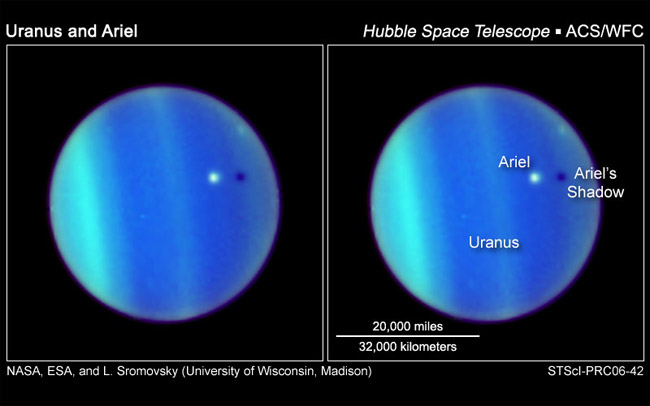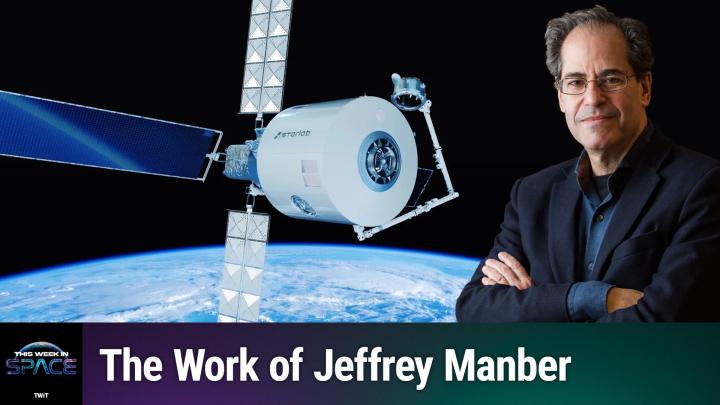Rare Uranian Eclipse Captured by Hubble

The shadow cast by a moon as it drifted through space above the blue-green cloudtops of Uranus was recentlycaptured for the first time by NASA's Hubble Space Telescope.
To anobserver on Uranus, the passage of the planet's icy moon Arielwould have appeared as a solar eclipseand the Sun would be completely blottedout. However, the effect would not be nearly as dramatic as a total eclipseinvolving Earth and its moon. The Sun appears much smaller on Uranus than onEarth because the giant planet is located much further away. Therefore, a totaleclipse involving its moon completely blocks out not only the Sun's body, butalso its corona.
Though such"transits" by moons across the disks of their planets are commonplacefor other gas giants like Jupiter,the satellites of Uranus orbit theplanet in such a way that they rarely cast shadows on the planet's surface. Themoons of Uranus orbit the planet above the equator, so their paths alignedge-on to the Sun only every 42 years.
In orderfor a Uranian transit to occur, the Sun must shinedirectly over the giant planet's equator; the next time this will happen againis in 2007. The last time such a Uranian equinoxoccurred was in 1965, but telescopes at the time were not sharp enough to viewthe transits.
Named aftera mischievous airy spirit in Shakespeare's "The Tempest," Ariel isonly one-third the size of Earth's moon.The moon is the nearest large satellite to Uranus.
As Uranusapproaches equinox, there will be additional eclipses by its large moons Umbriel, Titania, Oberon, as wellas manysmaller moons.
Because ourmoon is moving slowly away, it is only at this moment in geologic history thata totaleclipse can happen on Earth.Millions of years from now, our moon will be too small in the sky to completelyblock out the Sun.
Breaking space news, the latest updates on rocket launches, skywatching events and more!
- Cool Facts about Uranus
- Photos: Eclipse Wows the World
- New Images Reveal Clouds on Planet Uranus
- Another Moon for Uranus, Third This Year
- New Moons and Rings Found at Uranus
- Mercury to Make Rare Transit of Sun
Ker Than is a science writer and children's book author who joined Space.com as a Staff Writer from 2005 to 2007. Ker covered astronomy and human spaceflight while at Space.com, including space shuttle launches, and has authored three science books for kids about earthquakes, stars and black holes. Ker's work has also appeared in National Geographic, Nature News, New Scientist and Sky & Telescope, among others. He earned a bachelor's degree in biology from UC Irvine and a master's degree in science journalism from New York University. Ker is currently the Director of Science Communications at Stanford University.
